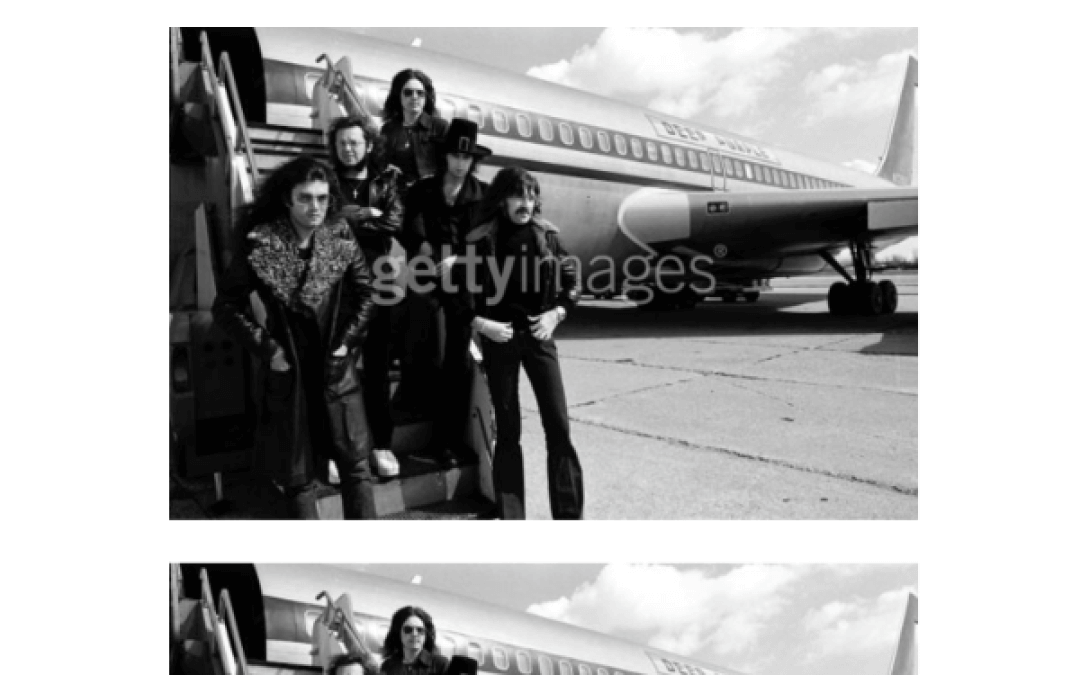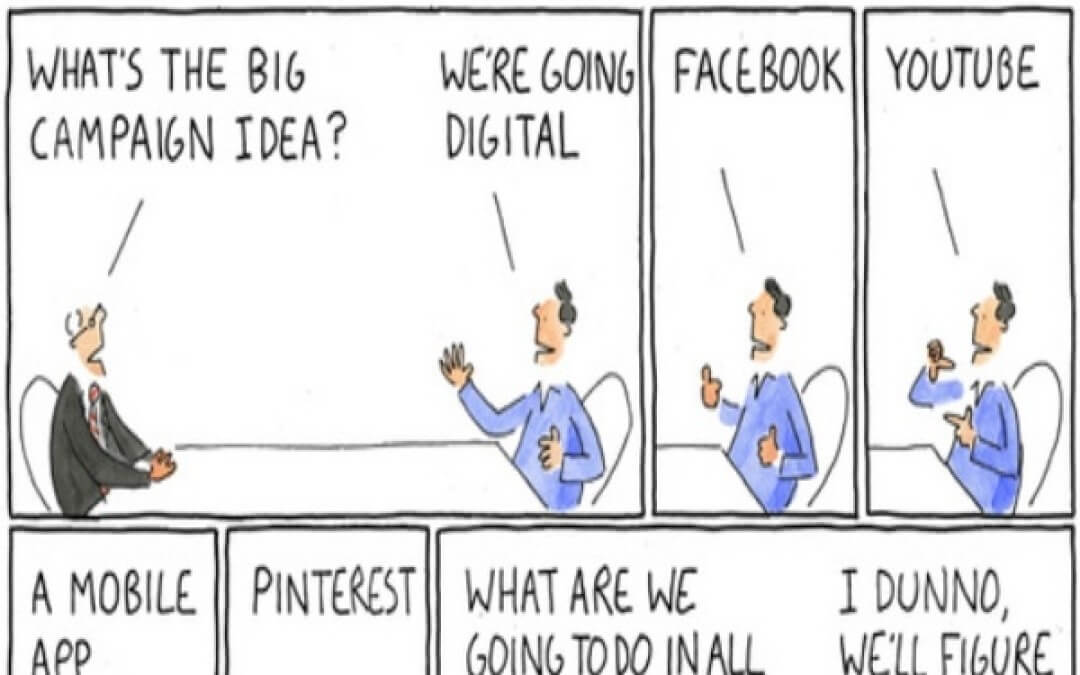Blog

“Why?” Is A Good Question. “Why Is That Good?” Is A Better One
Seth Godin recently posted about the value of asking “why?”. He points out that “because I said so” is not a valid answer. This reminded us of the question we’re always asking our clients, “why is that good?” Our question comes from the experience of hearing business people talk about their offerings using the superficial and meaningless mumbo-jumbo of jargon. To help them get below the surface – and to uncover the meaning that lies beyond the jargon – we ask them repeatedly, “why is that good?”. For example, “Why is it...
Read more >
Change Of Functionality Adds Meaning For Getty Images
It’s amazing how seemingly small changes in the way a business reaches out to people can have such a meaningful impact. Getty Images website users in the UK now see a more subtle, informative and personalized watermark when viewing images (bottom image). The new watermark is simply more useful: It shows the link that takes you directly to that image’s page, which is now richer in content. It credits the photographer, which is a great way for Getty to reach out to its contributors. It no longer stands as a dated and arrogant barrier between the image-seeking user and the images...
Read more >
When Businesses Truly Matter, Logos Don’t Matter At All
Brands are much more than just a logo. We spotted this great report at Fast Company about Virgin Group’s new global HQ in London. The theme was how Virgin cleverly managed to convey the brand’s values through workplace design, without using the “brand” as so many people think about it. That’s right. Take a look, there’s no logo proclaiming the “proud” owner. Virgin has inspired us for years by their way of building meaningful bridges between their business units and their employees and customers. We believe they are vanguards of an idea...
Read more >
A More “Valued” Value Proposition for your Business
The traditional value proposition is defined as: Value = Benefits – Cost. In other words, people buy from brands that deliver more for less. In the past, when the focus has been on “faster, cheaper, bigger, now”, it was enough to think only about the rational benefits your brand offered – and to build your value proposition from there. Today there is a need to radically overhaul the definition of “benefits” when articulating value propositions. Today people are seeking ways to create new meaning in their lives, brands need to go beyond rational appeals and...
Read more >
All Together Now: “It’s A Channel, Not A Strategy”
Once again we share the brilliant insights of Tom Fishbourne. Tom illustrates the problem of being more focused on the channels of communication than on what your brand is trying to achieve in this world. Hearing that everyone is posting to Facebook, sending tweets and “pinning” things on Pinterest naturally perks our attention, and suggests we will be missing out if our brand isn’t “there”. But, honestly, there is no “there” there (sorry Oakland). It is not enough to simply “be” in a space, be it digital, social or the latest hot app or...
Read more >
What Does Purpose Look and Feel Like for Your Brand
Sometimes It’s Not What You Add To A Brand, But What You Take Out We were reminded of the story of the sculptor who was asked how he managed to fashion a beautiful elephant out of a piece of granite. He replied, “By chipping away all the pieces that didn’t look like an elephant”. What elements of your brand strategy “don’t look (or feel) like your brand”? Does your brand’s purpose look (and feel) right? Your brand’s purpose, its reason for being or ambition is the key to the meaning you create (or fail to create) in this world. If your...
Read more >
Emotional Design Principles Build Meaningful Brand Interactions
Emotional Design We recently came across an older, but interesting article about the use of emotion in design. The piece takes us through the premises of two books on website user interface design, “Emotional Design” by Don Norman, and “Designing for Emotion” by Aaron Walter. We were drawn to this recap of Norman’s 3-level approach to creative design: The visceral level – the appearance of a design The behavioral level – how the product works The reflective level – the long-term impact of the design By combining these three levels in the right...
Read more >
Employees Love Brands That Truly Matter
Brands that truly matter It’s amazing how a focus on emotion and meaning can change the way employees approach their work. They feel like doing more. Employees are eager, motivated and driven. They wake up looking forward to their work day, and return home feeling a sense of purposeful accomplishment. They care more for one another. The workplace is civil, considerate and supportive. Employees are empathetic and compassionate about their bosses, their peers, their reports and everyone in the business. They work better together. Employees are more open to collaboration, teamwork and sharing....
Read more >
Meaningful Brands evoke “Of Course” Moments
Meaningful brands make people feel good. We came across a reference to Christian Lindholm, of the design firm Fjord, and his “of-course principle of design”. “Most companies, he said, are looking to ‘wow’ with their products, when in reality what they should be looking for is an ‘of course’ reaction from their users.” We’re not opposed to brands creating a “wow” sensation, at least when there is a genuine reason to make people feel that way. Often, it is better for brands to strive to create numerous “of course” moments with...
Read more >
The Naked Brand: Coming To A Screen Close To Your Customers And Employees
One day soon, people both inside and outside your company, are going to sit down and watch this film. For some people, it will simply reaffirm what they already know and feel. For others, it will spark an awareness that there’s more to brands than one tends to think: It will alter their perception of themselves and the brands in their lives. It will change their expectations about the brands they use today, and choose to use tomorrow. It will make them think twice about how they spend their money and where they earn their wages. It will make them decide they are either dealing with a...
Read more >
Reconstructing the Bridge Between Your Brand and Your Employees
Right now, there’s some sort of bridge between your brand and your employees. That bridge defines the nature of the relationship between your brand and the hearts and minds of your employees. Think back, when, how and why was it built? Ask yourself, does it serve the needs you have today? Are you aware of what crosses that bridge every day? Do your employees act as though the bridge only goes one way? To seize today’s opportunities, and to be better fit for the future, you need to rebuild that bridge. It’s time to add more lanes going in both directions, so there’s...
Read more >
From Morning Expectations To Evening Reflections, Emotionally Meaningful Workplaces Rule
What makes a workplace emotionally meaningful? It’s a place where people feel their work is worthwhile. They feel that what their company does, how it does it and why it does it is both respectable and admirable. As a result, they feel proud to be associated with the company. They also feel that what their company does is both helpful and valuable to people. As a result, they feel part of something purposeful. It’s a place where people feel their work experience is gratifying. They feel that they and their colleagues work in a committed and focused way. As a result, they feel...
Read more >
Balancing the “Give and Take” Between Your Brand and the People It Needs
Commerce is all about give and take. Your brand holds out a bundle of value, people offer their time (as employees) or money (as customers or investors) and your brand takes. The game, of course, is to ensure your bundle of value is seen as something desirable, and well worth the time or money to be invested. But what happens when your bundle of value isn’t seen as being especially desirable? Even worse, when people start to question whether it’s worth their investment? It can happen easily. Your competitors are constantly playing catch up with whatever you do (welcome to the era...
Read more >
If You Don’t Have Anything Meaningful To Say, Social Media Won’t Help You Say It Better
We loved this rant about the idea that social media is a “brand strategy”. Repeat after me, urges the presenter, “Social media is a channel”. So, if you’re struggling to make social media work for your brand, maybe it’s time to look at what your brand is saying through social media. How is it creating a better “give and take” between your brand and the people vital to its success? How is it helping people generate new meaning in their lives? How is it creating a new relationship, not simply deploying the same messages used elsewhere? Read the...
Read more >
How To Completely And Utterly Destroy An Employee’s Work Life
We came across a fascinating workplace story in The Washington Post by Teresa Amabile and Steven Kramer, authors of The Progress Principle. Over the past 15 years, the team has tracked diary entries of 238 executives in 7 different companies. Their bottom line: What we discovered is that the key factor you can use to make employees miserable on the job is to simply keep them from making progress in meaningful work. Consider this: on one-third of those 12,000 days, the person writing the diary was either unhappy at work, demotivated by the work, or...
Read more >
